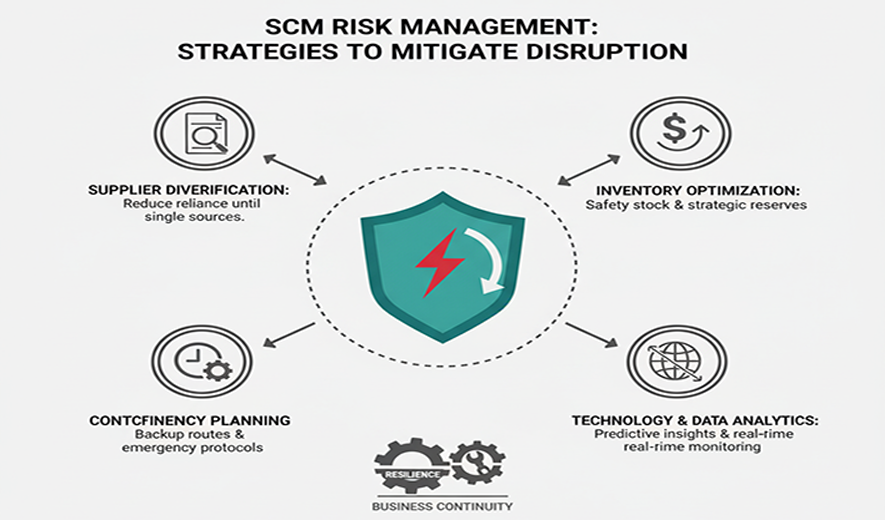
SCM Risk Management: Strategies to Mitigate Disruption
Supply chain risk management (SCRM) is the proactive process of identifying, assessing, and mitigating vulnerabilities that could disrupt the flow of goods and services. Instead of waiting for a crisis, companies use strategic planning to build resilience and ensure business continuity.
1. Enhance visibility and transparency
You cannot manage what you cannot see. Implementing technology to achieve end-to-end visibility is fundamental.
- Supply chain mapping: Create a detailed map of all suppliers, including sub-tier suppliers (Tier 2 and Tier 3), to identify hidden vulnerabilities and concentration risks.
- Real-time tracking: Use IoT sensors, GPS, and RFID tags to get up-to-the-minute information on inventory and shipments. This allows for rapid response to delays or issues.
- Cloud-based platforms: Utilize centralized systems for real-time data sharing and collaboration among all stakeholders, from manufacturers to logistics partners.
2. Diversify and regionalize your network
Reduce reliance on single points of failure by expanding your supplier and logistics network.
- Multi-sourcing: Procure critical materials and components from multiple suppliers in different geographic regions. This prevents a disruption in one area from halting all production.
- Nearshoring and friend-shoring: Move some sourcing and manufacturing closer to home (nearshoring) or to politically stable countries (friend-shoring). While this may increase costs, it reduces risk from long-distance transport and geopolitics.
- Multiple distribution centers: Use geographically dispersed warehouses to ensure that a natural disaster or other local event does not impact your entire distribution network.
3. Adjust inventory and capacity strategies
Shift from a "just-in-time" to a "just-in-case" inventory mindset for critical items.
- Safety stock buffers: Hold extra inventory (safety stock) for essential components and finished products. The amount should be based on risk assessments and historical demand data.
- On-demand manufacturing: Utilize flexible manufacturing, such as 3D printing, to produce items closer to the point of consumption, which provides a backup to traditional production.
4. Invest in predictive and agile technologies
Leverage modern tech to move from reactive crisis management to proactive risk prevention.
- Predictive analytics and AI: Use data science to analyze historical data and external factors (like weather or social media) to forecast potential disruptions before they happen.
- Digital twins and simulations: Create a virtual model of your supply chain to run "what-if" scenarios and test your response plans.
- Agile planning: Shift from long-range plans to more flexible daily or weekly adjustments based on real-time data.
5. Strengthen relationships and communication
Your suppliers are your first line of defense against disruption.
- Collaborate closely: Work with key suppliers to understand their own vulnerabilities and develop shared contingency plans. Consider them strategic partners, not just vendors.
- Share information: Be transparent with your suppliers about sales forecasts and changes in demand. This allows them to plan better and avoid issues.
Monitor performance: Continuously track supplier performance on metrics like on-time delivery and quality. Consider their financial health and stability as well.
